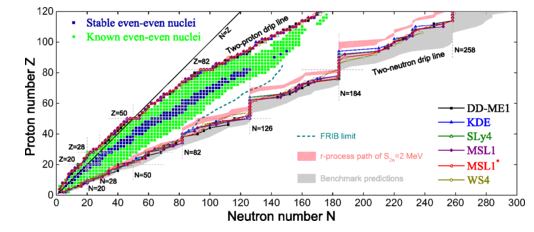4 New Elements Added to Periodic Table
It’s official. The International Union of Pure and Applied Chemistry officially recognized the discoveries of four new elements.
more…
4 New Elements Added to Periodic Table
It’s official. The International Union of Pure and Applied Chemistry officially recognized the discoveries of four new elements.
more…
Tau.Neutrino said:
4 New Elements Added to Periodic TableIt’s official. The International Union of Pure and Applied Chemistry officially recognized the discoveries of four new elements.
more…
So is there any limit to how many elements there might be?
I love you man but this article is from 2016. A simpler time, a happier time.
The Rev Dodgson said:
Tau.Neutrino said:
4 New Elements Added to Periodic TableIt’s official. The International Union of Pure and Applied Chemistry officially recognized the discoveries of four new elements.
more…
So is there any limit to how many elements there might be?
yes
SCIENCE said:
The Rev Dodgson said:
Tau.Neutrino said:
4 New Elements Added to Periodic TableIt’s official. The International Union of Pure and Applied Chemistry officially recognized the discoveries of four new elements.
more…
So is there any limit to how many elements there might be?
yes
… and what is it?
The new elements are Nihonium, Moscovium, Tennessine and Oganesson.
The Rev Dodgson said:
SCIENCE said:
The Rev Dodgson said:So is there any limit to how many elements there might be?
yes
… and what is it?
well, look, the Tolman–Oppenheimer–Volkoff limit is about 4.3e+30 kg, so even if they’re all protons (which they won’t be), you could have up to 2.6e+57
> I love you man but this article is from 2016.
Yes.
SCIENCE said:
The Rev Dodgson said:
SCIENCE said:yes
… and what is it?
well, look, the Tolman–Oppenheimer–Volkoff limit is about 4.3e+30 kg, so even if they’re all protons (which they won’t be), you could have up to 2.6e+57
Oh, I think I get it. Too big and you get a black hole. There’s some real physics behind that. A neutron star can be thought of as a single giant atom. The instability of the nucleus is countered by the gravitational attraction.
It used to be said (in the 1950s) that the upper limit on the size of elements in the periodic table from the r-process is the neutron drip line. But, starting in 2017, three isotopes were discovered beyond the calculated neutron drip line.
I’ll see if I can dig it up. No luck. I don’t see any obvious chart on the internet where the neutron drip and proton drip lines converge to pinch off the top of the periodic table. eg. This chart doesn’t seem to have any trouble with atoms with up to and beyond 290 neutrons. For Oganesson so far we’re talking less than 180 neutrons.

I dug up something quite different, a limit on electron orbitals rather than atomic nuclei. “As early as 1940, it was noted that a simplistic interpretation of the relativistic Dirac equation runs into problems with electron orbitals at Z > 1/α ≈ 137, suggesting that neutral atoms cannot exist beyond element 137, and that a periodic table of elements based on electron orbitals therefore breaks down at this point. On the other hand, a more rigorous analysis calculates the analogous limit to be Z ≈ 173 where the 1s subshell dives into the Dirac sea, and that it is instead not neutral atoms that cannot exist beyond element 173, but bare nuclei, thus posing no obstacle to the further extension of the periodic system. Atoms beyond this critical atomic number are called supercritical atoms.”